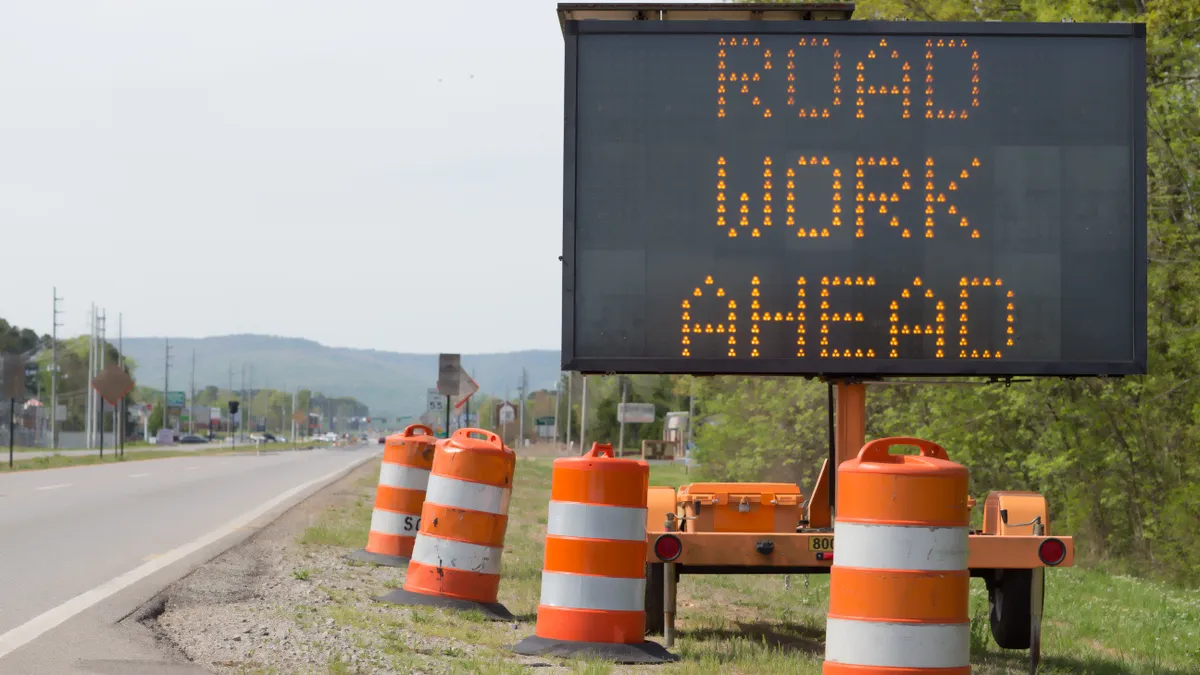Although road and bridge construction costs continue to be high compared to pre-pandemic levels, the prices of key materials — like concrete, asphalt and diesel — have been coming down, providing some much needed relief for builders.
“We’ve seen a moderation in prices over the last year, but certainly before that time, we did see significant increases in a number of the materials used for highway and bridge construction,” said Alison Black, senior vice president and chief economist at American Road and Transportation Builders Association.

However, that doesn’t mean inflation is done with the industry, especially as labor woes continue. The cost of highway construction projects jumped 53.8% in the first quarter of 2023 from the fourth quarter of 2020, according to the Federal Highway Administration National Highway Construction Cost Report.
The National Highway Construction Cost Index reached a new all-time high in the first quarter of 2023; increasing 2.7% from the previous quarter, according to the Bureau of Transportation Statistics.
The sheer chaos caused by the pandemic has been a factor in these high prices, said Black.
“It was not just isolated to the construction sector, which is a little bit different than we’ve seen in the past,” she said. “It’s not uncommon to have fluctuation of material prices, but this was more widespread and broader than we’ve seen over the last few decades.”
Positive signs on the horizon
As bad as those numbers look, inflation has started to cool for road builders, mostly as material costs have come down.
“The good news is that things have leveled off,” said Black.
Construction input prices decreased 1.2% in October, according to an Associated Builders and Contractors’ analysis of Bureau of Labor Statistics Producer Price Index data.

A big factor in that decline has been the price of concrete, which was a major issue in 2022, said Ken Simonson, chief economist of the Associated General Contractors of America. In that year, AGC chapters in event state reported companies were being put on allocation and “getting as little as 60% of deliveries of ready mix that they had expected or unexpected long lead times for getting precast concrete products,” he said.
That wasn’t the case in 2023, except in Washington, where aquaculture experts are working to help salmon in the state’s canals and waterways navigate their way upstream with fish passes or weirs that require a large amount of precast concrete.
The cost of materials like asphalt and diesel has also seen major decreases in price, he added, and steel delivery times have improved.
Roadblocks ahead
That doesn’t mean all is rosy. Labor continues to drive costs upward, as contractors struggle to attract workers. Construction job openings rose in November to 459,000, a 10.3% increase from the month prior, according to an AGC analysis of Bureau of Labor Statistics data.
Wage hikes for highway and bridge construction have also been in line with overall increases in the private sector, which means the industry can’t compete on money alone.
“With overall wages growing in the economy, there have to be other ways that you can attract more workers to the space,” Black said.
This has long been a problem in the industry, but may be exacerbated by the difficult nature of the work, and what other kinds of high-paying jobs are available, said Simonson.
“Now there are so many jobs that can be done remotely or on a hybrid basis or flexible. It puts construction at a bigger disadvantage,” he said.
That could push costs higher on some specialized, technical projects being funded by the Infrastructure Investment and Jobs Act, Simonson added, if there aren’t enough contractors who are fully staffed and able to bid on these projects.
Black said that the long-term nature of the IIJA, which she said has enough purchasing power to support the market over the next five to 10 years, means inflation will have less of an impact as work moves forward.
“There’s no question that the IIJA, plus some state revenue increases, plus state highway investment, are driving a very strong highway and bridge construction market despite the headwinds of inflation and the workforce,” she said.











